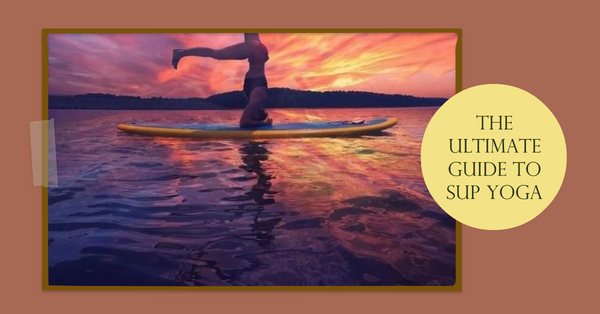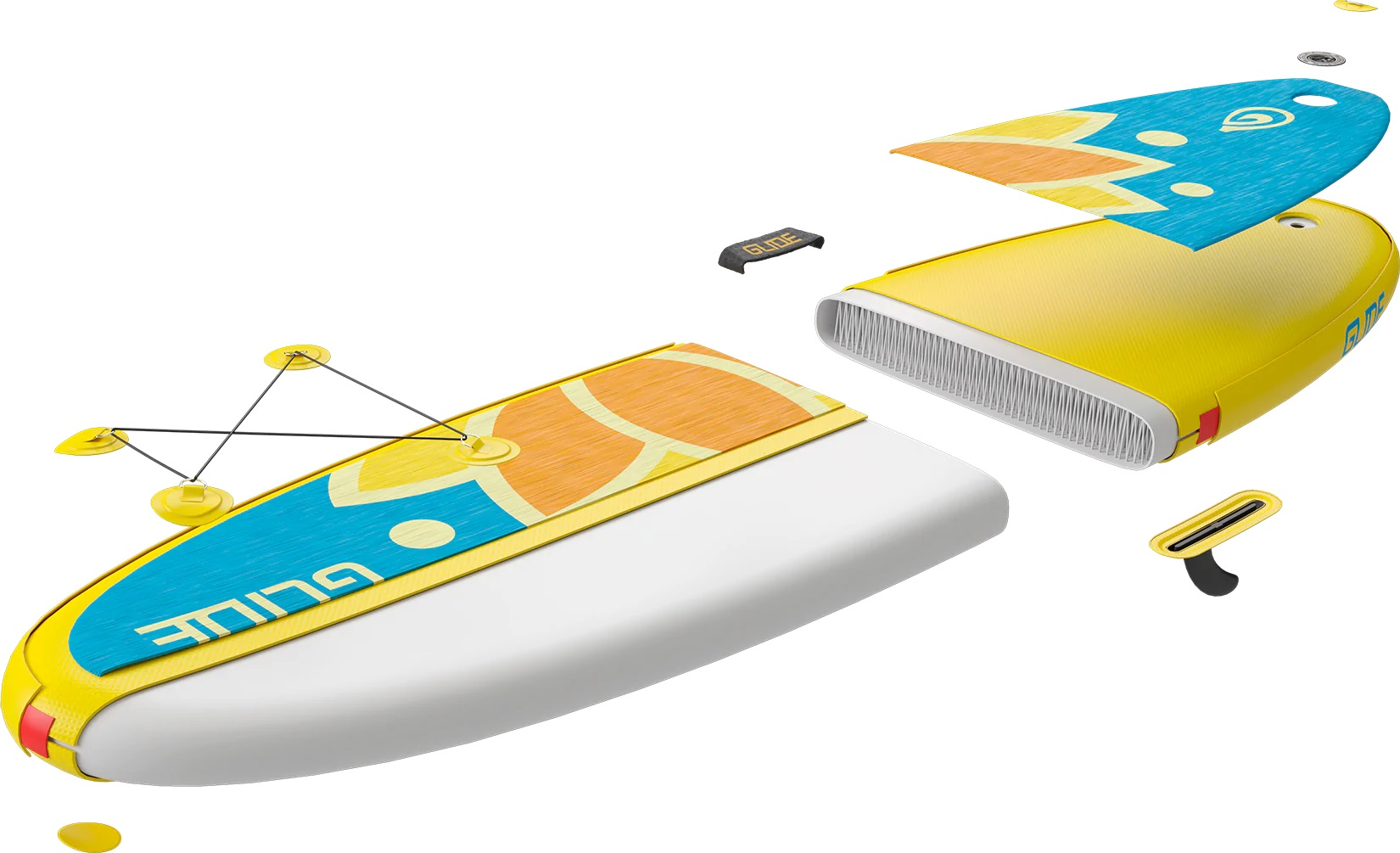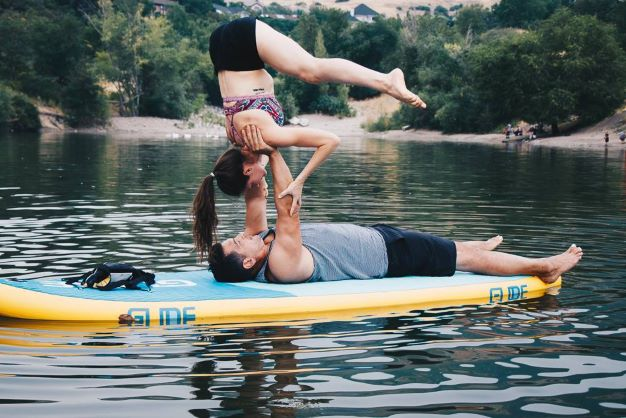
Float Your Yoga: A Beginner’s Guide to SUP Yoga
SUP Yoga combines the mindfulness of yoga with the freedom of paddleboarding. Learn the benefits, beginner poses, safety essentials, and why the Glide Lotus Elite is the best yoga paddle board of 2025 for balance, comfort, and a transformative on-water experience.
SUP yoga combines the serenity of yoga with the beauty of being on the water. Practicing poses on a paddle board challenges balance, builds core strength, and deepens mindfulness. With the right board and a few beginner tips, anyone can enjoy SUP yoga — no advanced paddling skills required. This guide covers what SUP yoga is, how to get started, and why it’s one of the most rewarding ways to connect body, mind, and nature.
Stand-Up Paddle Board Yoga (SUP Yoga) is one of the most refreshing ways to combine fitness, mindfulness, and nature. It’s yoga—but with the added challenge and serenity of water beneath you. Whether you’re a lifelong yogi looking for a new twist or someone brand new to both yoga and paddleboarding, SUP Yoga offers benefits that go far beyond stretching and balance.
In this guide, you’ll learn what makes SUP Yoga so powerful, how to choose the right equipment, the best places to practice, and beginner-friendly poses to get you started. By the end, you’ll have everything you need to confidently float your yoga.
Table of contents

Why SUP Yoga? The Benefits of Practicing on Water
Practicing yoga on land is rewarding enough, but moving your practice to a paddle board adds a new dimension. Here’s why SUP Yoga has become such a fast-growing wellness activity:
1. Improved Balance and Coordination
Water is constantly moving, which means your body has to engage your core and stabilizer muscles to stay centered. Even the simplest poses become a mindful balance exercise, improving coordination you’ll notice in everyday life.
2. A Full-Body Workout
SUP Yoga isn’t just stretching—it’s strength training. You’ll activate your arms, legs, back, and glutes while paddling, then shift into yoga poses that challenge muscles you didn’t even know you had. It’s a total-body, low-impact workout.
3. Connection with Nature
Few activities create the same sense of peace as floating on a calm lake, hearing the water lap against your board, and breathing in fresh air. SUP Yoga blends mindfulness with the natural environment, turning every practice into moving meditation.
4. Mental Clarity and Stress Relief
The combination of balance, breath, and water encourages presence. Studies show time in nature reduces stress hormones—and SUP Yoga takes that benefit to another level.
5. Fun and Challenge
Let’s face it: falling in is part of the fun! SUP Yoga keeps you playful and reminds you not to take your practice too seriously.

Choosing the Right Gear for SUP Yoga
The right equipment makes all the difference between a frustrating experience and a blissful flow session.
Paddle Board
The board is your floating yoga mat, so stability matters most. Look for:
-
Width: 32–35 inches wide for stability.
-
Length: Around 10’6”–11’ for balance and maneuverability.
-
Deck Pad: A full-length EVA foam pad gives grip and comfort.
-
Weight Capacity: Enough to support you and any extra gear.
👉 Best Option: The Glide Lotus Elite—designed specifically for yoga. At 35" wide with an oversized traction pad, it’s built for stability in every pose. Bonus: it comes with a free kayak seat and blade for versatility.
Paddle
Choose a lightweight, adjustable paddle you can easily stow before your session. Carbon or fiberglass is best for long paddles.
Safety Gear
-
PFD (Personal Flotation Device): Required in many areas, but choose a lightweight or inflatable belt style for comfort.
-
Leash: Keeps your board from drifting away if you fall in.
-
Anchor: Optional, but helpful to keep your board from drifting while practicing.
Clothing
Wear flexible, quick-drying clothing. Rash guards, swimsuits, or leggings work well. In cooler weather, layer with neoprene or synthetic fabrics.
Finding the Perfect SUP Yoga Location
Your environment can make or break your first experience. Look for:
-
Calm water: Lakes, bays, marinas, or slow-moving rivers.
-
Low traffic: Avoid crowded boating areas.
-
Accessibility: Shallow entry points make it easy to launch.
-
Nature factor: A scenic spot can make the practice more peaceful.
Pro Tip: Go early in the morning when winds are lighter and waters are calmer.
Beginner-Friendly SUP Yoga Poses
When starting out, focus on simple, grounded poses before moving to standing balances.
Seated or Kneeling Poses
-
Easy Pose (Sukhasana): Cross-legged meditation to ground yourself.
-
Seated Twist (Ardha Matsyendrasana): Gently stretch your back while engaging your core.
-
Cat-Cow Flow: Great warm-up for your spine and balance awareness.
Transitional Poses
-
Child’s Pose (Balasana): Rest and connect with your breath.
-
Tabletop to Bird Dog: Engages your core while challenging stability.
Standing Poses (once comfortable)
-
Mountain Pose (Tadasana): Center yourself before flows.
-
Warrior II (Virabhadrasana II): Builds strength and balance—take it slow.
-
Downward Dog: A great stretch that also builds confidence on water.
Remember: Stay centered over the carry handle of your board—it’s the balance sweet spot.
Safety Tips for SUP Yoga
-
Always wear a leash and keep a PFD on your board.
-
Check weather and wind before heading out.
-
Paddle with a friend or in a class for extra safety.
-
Stay hydrated—bring a water bottle in a dry bag.
-
Don’t be afraid to fall—it’s part of the experience!
Glide vs. Other Yoga SUPs
Here’s why the Glide Lotus Elite stands out:
Feature
Glide Lotus Elite
BOTE Flow Aero
Isle Scout
iRocker Cruiser
| Width | 35″ | 33″ | 34″ | 33″ |
| Full Yoga Deck Pad | ✅ Yes | ✅ Partial | ✅ Partial | ❌ Limited |
| Kayak Conversion | ✅ Included Free | ❌ Extra | ❌ Extra | ❌ Extra |
| Max Capacity | 400+ lbs | ~250 lbs | 300 lbs | 275 lbs |
| Price (approx.) | $849 | $899 | $895 | $799 |
Most brands sell kayak kits separately—Glide includes it free.

Final Thoughts: Float, Flow, and Find Balance
SUP Yoga isn’t about perfection—it’s about presence. It’s the combination of water, movement, and breath that makes this practice special. You’ll laugh when you fall in, feel accomplished when you nail a pose, and leave the water calmer and stronger than when you started.
The Glide Lotus Elite was designed for yogis who want more than just a paddle board. With unmatched stability, a plush full-length deck pad, and kayak conversion included, it’s your floating yoga studio—ready to travel anywhere your practice takes you.
👉 Ready to try SUP Yoga this year?
Explore the Glide Lotus Elite Yoga SUP
FAQs
What is SUP yoga?
SUP yoga is the practice of performing yoga poses on a stand up paddle board, usually on calm water.
Do I need to be good at yoga or paddle boarding to try SUP yoga?
No. Beginners in both yoga and paddle boarding can start with simple poses and build confidence over time.
What kind of paddle board is best for yoga?
A wide, stable board (at least 34 inches wide) with a soft, full-length deck pad — like the Glide Lotus Elite — works best.
Is SUP yoga safe?
Yes, when practiced on calm, flat water with a leash and PFD nearby. Falls are part of the fun — you just splash in and climb back up.
What should I wear for SUP yoga?
Comfortable, quick-drying clothes or swimwear. In cooler water, a wetsuit or yoga-specific gear may be helpful.
Do I need special equipment?
Other than a stable SUP, paddle, and anchor (optional to keep you in place), no. Many boards come with all the accessories you need.





